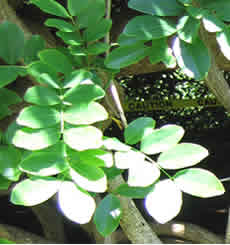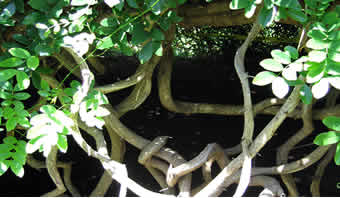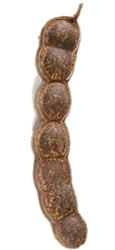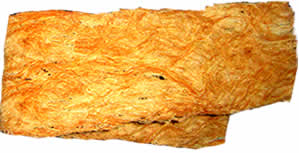 Anti-inflammatory effect of Entada Phaseoloides. In a study done to establish the anti-inflammatory effect of entada phaseoloides pulp extract, it has been found that a paste prepared from powdered entada phaseoloides seed, when applied topically can improve the anti-inflammatory activity for induced arthritis in rats. (Dawane JS, Pandit VA, Rajopadhye BD. Experimental evaluation of anti-inflammatory effect of topical application of entada phaseoloides seeds as paste and ointment . North Am J Med Sci . 2011; 3(11): 513-517. doi:10.4297/najms.2011.3513.)
Anti-inflammatory effect of Entada Phaseoloides. In a study done to establish the anti-inflammatory effect of entada phaseoloides pulp extract, it has been found that a paste prepared from powdered entada phaseoloides seed, when applied topically can improve the anti-inflammatory activity for induced arthritis in rats. (Dawane JS, Pandit VA, Rajopadhye BD. Experimental evaluation of anti-inflammatory effect of topical application of entada phaseoloides seeds as paste and ointment . North Am J Med Sci . 2011; 3(11): 513-517. doi:10.4297/najms.2011.3513.)
Because of this effect, gogo, gugo or entada phaseoloides is traditionally used to treat various glandular inflammations that may include rheumatism, arthritis, sprains, joint and muscle pains, stomach pains and others.
Anti-diabetic Effects of Entada Phaseoloides. Entada Phaseoloides seed has long been used by Dai people, a small ethnic Chinese group for the treatment of Diabetes mellitus. A study has been conducted in laboratory rats to verify its activity against diabetes by comparing its effects from a known diabetes drug. The study have a conclusive report that Entada Phaseoloides or gogo extract demonstrates hypoglycemic and hypolipidemic activity which supports its anti diabetic properties. 1
Gugo or Entada Phaseoloides contains saponins that in a study done on animals have a depressant effect on the respiratory system and inhibit the movements of unstriped muscles of the intestines and the uterus when
Saponins has also been established to have a strong haemolytic action on human red blood cells. Saponin extract from gogo bark when taken internally can dramatically reduce the blood pressure in animal studies.
Gogo contains entagenic acid which has anti fungal activity against phytopathogenic fungi. A glycoside of entagenic acid possesses anti- neoplastic activity.
Other traditional and medicinal application for gogo or entada phaseoloides
- Gogo powdered seeds are used to treat jaundice and edema due to malnutrition
- Gogo bark decoction is used to treat hair and scalp related problems such as dandruff and hair loss.
- Gogo bark decoction is used to wash wounds and ulcers.
- Gugo bark decoction is also used to wash away skin itch.
- Gogo seed extract is also used as emetic or to treat vomiting.

 Also knows as:
Also knows as: Anti-inflammatory effect of Entada Phaseoloides. In a study done to establish the anti-inflammatory effect of entada phaseoloides pulp extract, it has been found that a paste prepared from powdered entada phaseoloides seed, when applied topically can improve the anti-inflammatory activity for induced arthritis in rats. (Dawane JS, Pandit VA, Rajopadhye BD. Experimental evaluation of anti-inflammatory effect of topical application of entada phaseoloides seeds as paste and ointment . North Am J Med Sci . 2011; 3(11): 513-517.
Anti-inflammatory effect of Entada Phaseoloides. In a study done to establish the anti-inflammatory effect of entada phaseoloides pulp extract, it has been found that a paste prepared from powdered entada phaseoloides seed, when applied topically can improve the anti-inflammatory activity for induced arthritis in rats. (Dawane JS, Pandit VA, Rajopadhye BD. Experimental evaluation of anti-inflammatory effect of topical application of entada phaseoloides seeds as paste and ointment . North Am J Med Sci . 2011; 3(11): 513-517.  Gogo scalp and hair wash
Gogo scalp and hair wash

